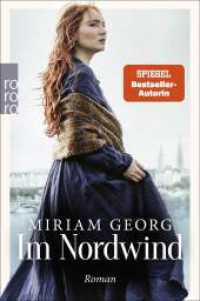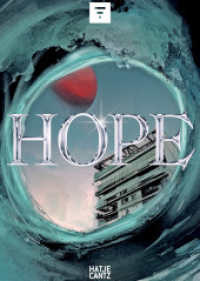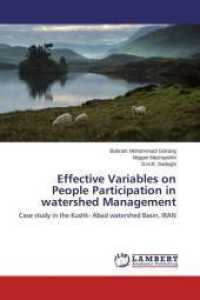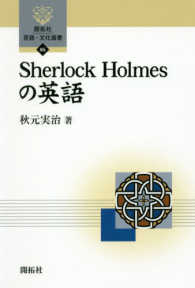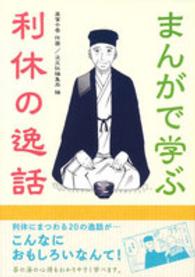- ホーム
- > 洋書
- > 英文書
- > History / World
Full Description
The Routledge Handbook of Archaeothanatology spans the gap between archaeology and biological anthropology, the field and laboratory, and between francophone and anglophone funerary archaeological approaches to the remains of the dead and the understanding of societies, past and present.
Interest in archaeothanatology has grown considerably in recent years in English-language scholarship. This timely publication moves away from anecdotal case studies to offer syntheses of archaeothanatological approaches with an eye to higher-level inferences about funerary behaviour and its meaning in the past. Written by francophone scholars who have contributed to the development of the field and anglophone scholars inspired by the approach, this volume offers detailed insight into the background and development of archaeothanatology, its theory, methods, applications, and its most recent advances, with a lexicon of related vocabulary.
This volume is a key source for archaeo-anthropologists and bioarchaeologists. It will benefit researchers, lecturers, practitioners and students in biological anthropology, archaeology, taphonomy and forensic science. Given the interdisciplinary nature of these disciplines, and the emphasis placed on analysis in situ, this book will also be of interest to specialists in entomology, (micro)biology and soil science.
Contents
Introduction: Archaeothanatology, funerary archaeology and bioarchaeology: perspectives on the long view of death and the dead
Christopher J. Knüsel and Eline M.J. Schotsmans
Part I: Archaeothanatology - methodological guidelines
1. Methodological guidelines for archaeothanatological practice
Frédérique Blaizot
2. A tale of two worlds: Terminologies in archaeothanatology
Bruno Boulestin
3. Words between two worlds: Collective graves and related issues in burial terminology
Bruno Boulestin and Patrice Courtaud
4. Secondary cremation burials of past populations: Some methodological procedures for excavation, bone fragment identification and sex determination
Germaine Depierre
5. The accompanying dead
Bruno Boulestin
6. Denied funeral rites: The contribution of the archaeothanatological approach
Aurore Schmitt
Part II: Period-specific applications
7. Early primary burials: Evidence from Southwestern Asia
Anne-marie Tillier
8. The earliest European burials
Bruno Maureille
9. Beyond the formal analysis of funerary practices? Archaeothanatology as a reflexive tool for considering the role of the dead amongst the living: A Natufian case study
Fanny Bocquentin
10. What can archaeothanatology add? A case study of new knowledge and theoretical implications in the re-study of Mesolithic burials in Sweden and Denmark
Liv Nilsson Stutz
11. Neolithic burials of infants and children
Mélie Le Roy and Stéphane Rottier
12. Defining collective burials: Three case studies
Aurore Schmitt
13. Different burial types but common practice: The case of the funerary complex at Barbuise and La Saulsotte (France) at the beginning of the Late Bronze Age
Stéphane Rottier
14. Deathways of the Durotriges: Reconstructing identity through archaeothanatology in later Iron Age southern Britain
Karina Gerdau-Radonić, Janne Sperrevik, Martin Smith, Paul Cheetham, and Miles Russell
15. The Roman cemetery of Porta Nocera at Pompeii: The contribution of osteological re-associations to the study of secondary cremation burials
Henri Duday
16. Reopening graves for the removal of objects and bones: Cultural practices and looting
Edeltraud Aspöck, Karina Gerdau-Radonić and Astrid Noterman
17. Cluniac funerary practices
Eleanor Williams
18. 'Bring out your dead': Funerary and public health practices in times of epidemic disease
Dominique Castex and Sacha Kacki
19. Jewish funerary practices in Medieval Europe
Philippe Blanchard
20. Islamic burials: Muslim graves and graves of Muslims
Yves Gleize
21. Recognising a slave cemetery: An example from colonial-period Guadeloupe, Lesser Antilles
Patrice Courtaud and Thomas Romon
Part III: Archaeothanatology of associated remains
22. Archaeothanatological approaches to associated remains in funerary contexts in Europe: An overview
Isabelle Cartron and Aurélie Zemour
23. An archaeothanatological approach to the identification of late Anglo-Saxon burials in wooden containers
Emma C. Green
24. Ceramic studies in funerary contexts from Roman Gaul
Christine Bonnet
25. Animal remains in burials
Patrice Méniel
26. The walking dead - life after death: archaeoentomological evidence in a Roman catacomb: (Saints Marcellinus and Peter, central area, 1st-3rd century AD)
Jean-Bernard Huchet and Dominique Castex
Part IV: Applied sciences, experiments and legal considerations
27. From flesh to bone: building bridges between taphonomy, archaeothanatology and forensic science for a better understanding of mortuary practices
Eline M.J. Schotsmans, Patrice Georges-Zimmerman, Maiken Ueland, and Boyd B. Dent
28. Exploring the use of actualistic forensic taphonomy in the study of (forensic) archaeological human burials: An actualistic experimental research programme at the Forensic Anthropology Center at Texas State University (FACTS), San Marcos, Texas
Hayley L. Mickleburgh, Daniel J. Wescott, Sarah Gluschitz, and M. Victor Klinkenberg
29. An experimental approach to the interpretation of prehistoric cremation and cremation burials
Mogens B. Henriksen
30. The taphonomic and archaeothanatological potentials of diagenetic alterations of archaeological bone
Thomas J. Booth, David Brönniman, Richard Madgwick, and Cordula Portmann
31. 3D models as useful tools in archaeothanatology
Géraldine Sachau-Carcel
32. Use of archaeothanatology in preventive (salvage/rescue) archaeology and field research archaeology
Mark Guillon
33. Managing and reburying ancient human remains in France: From legal and ethical concerns to field practices
Gaëlle Clavandier
Part V: Lexicon of archaeothanatological terms
34. Lexicon of terms used in archaeothanatology: A work still in the process of becoming
Christopher J. Knüsel, Karina Gerdau-Radonić, and Eline M.J. Schotsmans

